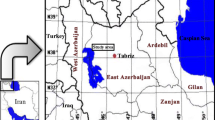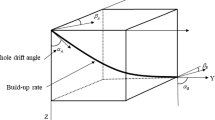Abstract
Flooding is a natural disaster that threatens people’s lives and causes economic losses. The accurate prediction of water level is of great significance for flood prevention. This study aimed to predict water levels in Wuhan City, which is located in the downstream of the Three Gorges Reservoir Region. In order to improve the accuracy of flood prediction, the AdaBoost algorithm was used to optimize a traditional back propagation neural network (BPNN) in order to resolve the slow convergence speed and local minimum in water level prediction. The improved BPNN was then employed to predict the water level in the study area for prediction intervals of 1 h, 3 h, and 5 h, respectively. Compared with the original BPNN, a generalized regression neural network, and a combination of a genetic algorithm and the original BPNN, the improved BPNN achieved superior water-level prediction. Additionally, the performance of the constructed model was evaluated using the mean absolute error, root-mean-square error (RMSE), mean absolute percentage error (MAPE), the correlation coefficients between the predicted and actual values of water level, and the frequency histograms of the prediction error. The results indicate that the improved BPNN model had a lower prediction error and show a reasonable normal distribution. Therefore, it is concluded that this model is suitable for the prediction of water level.










Similar content being viewed by others
Explore related subjects
Discover the latest articles and news from researchers in related subjects, suggested using machine learning.References
Barbetta S, Coccia G, Moramarco T, Todini E (2018) Real-time flood forecasting downstream river confluences using a Bayesian approach. J Hydrol 565:516–523. https://doi.org/10.1016/j.jhydrol.2018.08.043
Hajimirzaei B, Navimipour NJ (2019) Intrusion detection for cloud computing using neural networks and artificial bee colony optimization algorithm. ICT Express 5(1):56–59. https://doi.org/10.1016/j.icte.2018.01.014
Huang ML, Chou YC (2019) Combining a gravitational search algorithm, particle swarm optimization, and fuzzy rules to improve the classification performance of a feed-forward neural network. Comput Methods Programs Biomed 180:105016. https://doi.org/10.1016/j.cmpb.2019.105016
Huang L, Li X, Fang H, Yin D, Si Y, Wei J, Liu J, Hu X, Zhang L (2019) Balancing social, economic and ecological benefits of reservoir operation during the flood season: a case study of the Three Gorges Project, China. J Hydrol 572:422–434. https://doi.org/10.1016/j.jhydrol.2019.03.009
Jahangir MH, Mousavi Reineh SM, Abolghasemi M (2019) Spatial predication of flood zonation mapping in Kan River Basin, Iran, using artificial neural network algorithm. Weather Climate Extremes 25:100215. https://doi.org/10.1016/j.wace.2019.100215
Khan MYA, Tian F, Hasan F, Chakrapani GJ (2019) Artificial neural network simulation for prediction of suspended sediment concentration in the River Ramganga, Ganges Basin. India Int J Sediment Res 34(2):95–107. https://doi.org/10.1016/j.ijsrc.2018.09.001
Lei Z (2019) An upper limb movement estimation from electromyography by using BP neural network. Biomed Signal Process Control 49:434–439. https://doi.org/10.1016/j.bspc.2018.12.020
Li J-C, Zhao D-L, Ge B-F, Yang K-W, Chen Y-W (2018) A link prediction method for heterogeneous networks based on BP neural network. Phys A 495:1–17. https://doi.org/10.1016/j.physa.2017.12.018
Liu H, Zhang X, Zhang X (2019a) PwAdaBoost: Possible world based AdaBoost algorithm for classifying uncertain data. Knowl-Based Syst. https://doi.org/10.1016/j.knosys.2019.104930
Liu XJ, Min FY, Kettner AJ (2019b) The impact of large to extreme flood events on floodplain evolution of the middle and lower reaches of the Yangtze River, China. CATENA 176:394–409. https://doi.org/10.1016/j.catena.2019.01.027
Liu Y, You M, Zhu J, Wang F, Ran R (2019c) Integrated risk assessment for agricultural drought and flood disasters based on entropy information diffusion theory in the middle and lower reaches of the Yangtze River, China. Int J Disaster Risk Reduct 38:101194. https://doi.org/10.1016/j.ijdrr.2019.101194
Luo Q, Zhang X, Li Z, Yang M, Lin Y (2018) The effects of China’s Ecological Control Line policy on ecosystem services: the case of Wuhan City. Ecol Ind 93:292–301. https://doi.org/10.1016/j.ecolind.2018.05.009
Lyu J, Zhang J (2019) BP neural network prediction model for suicide attempt among Chinese rural residents. J Affect Disord 246:465–473. https://doi.org/10.1016/j.jad.2018.12.111
Senanayake S, White N, Graves N, Healy H, Baboolal K, Kularatna S (2019) Machine learning in predicting graft failure following kidney transplantation: a systematic review of published predictive models. Int J Med Inform 130:103957. https://doi.org/10.1016/j.ijmedinf.2019.103957
Silvestro F, Rossi L, Campo L, Parodi A, Fiori E, Rudari R, Ferraris L (2019) Impact-based flash-flood forecasting system: Sensitivity to high resolution numerical weather prediction systems and soil moisture. J Hydrol. https://doi.org/10.1016/j.jhydrol.2019.02.055
Sun W, Gao Q (2019) Exploration of energy saving potential in China power industry based on Adaboost back propagation neural network. J Clean Prod 217:257–266. https://doi.org/10.1016/j.jclepro.2019.01.205
Wang S, Zhang N, Wu L, Wang Y (2016) Wind speed forecasting based on the hybrid ensemble empirical mode decomposition and GA-BP neural network method. Renew Energy 94:629–636. https://doi.org/10.1016/j.renene.2016.03.103
Wang D, Luo H, Grunder O, Lin Y (2017) Multi-step ahead wind speed forecasting using an improved wavelet neural network combining variational mode decomposition and phase space reconstruction. Renew Energy 113:1345–1358. https://doi.org/10.1016/j.renene.2017.06.095
Wang W, Tang R, Li C, Liu P, Luo L (2018) A BP neural network model optimized by mind evolutionary algorithm for predicting the ocean wave heights. Ocean Eng 162:98–107. https://doi.org/10.1016/j.oceaneng.2018.04.039
Wang L, Wang P, Liang S, Qi X, Li L, Xu L (2019a) Monitoring maize growth conditions by training a BP neural network with remotely sensed vegetation temperature condition index and leaf area index. Comput Electron Agric 160:82–90. https://doi.org/10.1016/j.compag.2019.03.017
Wang S, Wu TH, Shao T, Peng ZX (2019b) Integrated model of BP neural network and CNN algorithm for automatic wear debris classification. Wear 426–427:1761–1770. https://doi.org/10.1016/j.wear.2018.12.087
Wu H-L, Cheng W-C, Shen S-L, Lin M-Y, Arulrajah A (2019a) Variation of hydro-environment during past four decades with underground sponge city planning to control flash floods in Wuhan, China: an overview. Undergr Space . https://doi.org/10.1016/j.undsp.2019.01.003
Wu L, Yang Y, Maheshwari M, Li N (2019b) Parameter optimization for FPSO design using an improved FOA and IFOA-BP neural network. Ocean Eng 175:50–61. https://doi.org/10.1016/j.oceaneng.2019.02.018
Xiao C, Chen N, Hu C, Wang K, Gong J, Chen Z (2019) Short and mid-term sea surface temperature prediction using time-series satellite data and LSTM-AdaBoost combination approach. Remote Sens Environ 233:111358. https://doi.org/10.1016/j.rse.2019.111358
Xu B, Dan H-C, Li L (2017) Temperature prediction model of asphalt pavement in cold regions based on an improved BP neural network. Appl Therm Eng 120:568–580. https://doi.org/10.1016/j.applthermaleng.2017.04.024
Xue H, Cui H (2019) Research on image restoration algorithms based on BP neural network. J Vis Commun Image Represent 59:204–209. https://doi.org/10.1016/j.jvcir.2019.01.014
Zhang Y (2019) Application of improved BP neural network based on e-commerce supply chain network data in the forecast of aquatic product export volume. Cogn Syst Res 57:228–235. https://doi.org/10.1016/j.cogsys.2018.10.025
Zhang X, Liu P, Cheng L, Liu Z, Zhao Y (2018) A back-fitting algorithm to improve real-time flood forecasting. J Hydrol 562:140–150. https://doi.org/10.1016/j.jhydrol.2018.04.051
Zhang J-P, Gao P-F, Fang F (2019) An ATPSO-BP neural network modeling and its application in mechanical property prediction. Comput Mater Sci 163:262–266. https://doi.org/10.1016/j.commatsci.2019.03.037
Zheng D, Qian Z-D, Liu Y, Liu C-B (2018) Prediction and sensitivity analysis of long-term skid resistance of epoxy asphalt mixture based on GA-BP neural network. Constr Build Mater 158:614–623. https://doi.org/10.1016/j.conbuildmat.2017.10.056
Zhou Y, Guo S, Chang F-J (2019) Explore an evolutionary recurrent ANFIS for modelling multi-step-ahead flood forecasts. J Hydrol 570:343–355. https://doi.org/10.1016/j.jhydrol.2018.12.040
Acknowledgements
This work was supported by the Hubei Province Support Project of Introducing Foreign Talents and Intelligence (No: 2019BJH004), the Natural Science Foundation for Innovation Group of Hubei Province, China (No: 2015CFA021), the National Key Research Program (2016YFD08009022), the Research Fund for Excellent Dissertation of China Three Gorges University (2020BSPY015), and the Open Projects Fund of the Engineering Research Center of Hubei Agricultural Environment monitoring (201606, 201607). We also acknowledge the co-author Yingfei Wang who works in China Three Gorges University, Yichang, Hubei, China.
Author information
Authors and Affiliations
Corresponding author
Additional information
Publisher's Note
Springer Nature remains neutral with regard to jurisdictional claims in published maps and institutional affiliations.
Rights and permissions
About this article
Cite this article
Xiong, B., Li, R., Ren, D. et al. Prediction of flooding in the downstream of the Three Gorges Reservoir based on a back propagation neural network optimized using the AdaBoost algorithm. Nat Hazards 107, 1559–1575 (2021). https://doi.org/10.1007/s11069-021-04646-4
Received:
Accepted:
Published:
Issue Date:
DOI: https://doi.org/10.1007/s11069-021-04646-4




